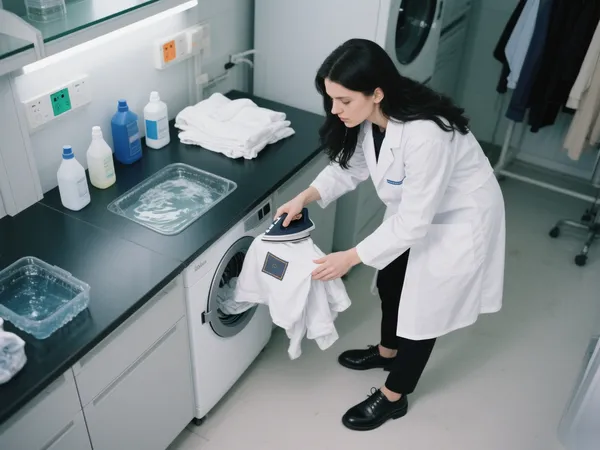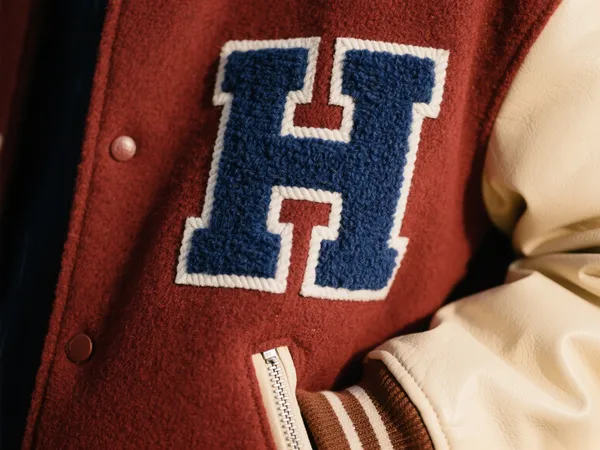アイロン接着パッチ ファッションやアクセサリーのブランディング、装飾、そして機能的なディテールにおいて、パッチは頼りになるソリューションとなっています。刺繍ロゴから装飾的なTPUバッジまで、これらのパッチは生地にしっかりと密着し、繰り返し使用してもしっかりと固定されるように設計されています。しかし、多くのデザイナーやブランドからよく聞かれる疑問があります。 アイロン接着パッチは洗濯すると剥がれてしまいますか?
このブログでは、熱プレスラベルと生地テストに関する豊富な経験に基づいて、この疑問にお答えします。また、実際の洗濯の過酷な条件にも耐えられるよう、パッチを長持ちさせるための実用的なヒントもご紹介します。

✅ アイロン接着ワッペンの洗濯テストがなぜ重要なのか
アパレル製造において、パッチやラベルは単なる装飾的な要素ではなく、ブランド認知度と製品の品質向上に不可欠です。しかし、アイロン接着パッチは、誤った方法で貼り付けたり、不適切な生地に使用したりすると、次のような問題が発生する可能性があります。
- 洗濯後に端が剥がれる
- 接着剤の破壊または剥離
- パッチの変形またはカール
これらの問題はスキップによって引き起こされることが多い 洗濯前テスト または誤解して 生地固有の要件 粘着パッチの長期的な性能を保証するために、特に加熱接着製品においては、洗濯試験は開発プロセスの重要な部分である必要があります。
⚠️ 洗濯テストを行わないと何が起きるでしょうか?
TPU転写、熱接着刺繍パッチ、シリコンバッジ、布地アップリケなど、多くのアイロン接着パッチは布地に直接貼り付けられ、衣類本体と同じ洗濯サイクルで洗濯されます。しかし、洗濯には以下のような複数のストレス要因が伴います。
- 水温と持続時間
- 洗剤と洗浄剤
- 脱水サイクル中の機械的摩擦
- 長期間にわたる繰り返しの洗濯サイクル
適切な洗濯テストを行わないと、次のような問題が発生する可能性があります。
- 接着剤が溶けたり、接着力が失われたり
- パッチの端が浮いたり反ったりする
- 表面印刷の褪色またはぼやけ
予期せぬ製品の不具合を避けるために、ブランドは大量生産に入る前に実際の生地を使ったテストを実施する必要があります。

🧪 推奨洗濯テストプロトコル
お客様には必ず実際の生地サンプルをお送りいただき、想定される洗濯条件をご確認いただくようお願いしております。以下は、実際の使用状況をシミュレートするための標準的な洗濯テスト手順です。
| テスト項目 | 標準要件 |
|---|---|
| 水温 | 40℃~45℃ |
| 洗濯時間 | 1サイクルあたり60分 |
| テストサイクル | 10回(一般的な使用状況をシミュレートするため) |
| 洗濯方法 | 通常の洗濯機洗い+脱水 |
最終製品が より積極的な洗浄プロセス工業用洗濯や高温洗浄など、特殊な加工が必要な場合は、事前にお知らせください。パッチの粘着剤や素材を調整いたします。
📦 テストに実際の生地を提供しなければならない理由
生地によって熱や接着剤への反応は異なります。アイロン接着ワッペンを貼る際は、生地の伸縮性、表面処理、構成などの要素が性能に大きく影響します。
以下にいくつかの例を示します。
- 伸縮性のある生地 パッチが伸びたり歪んだりする可能性がある
- ベルベットやふわふわした生地 適切な接着を妨げる可能性がある
- 撥水コーティング 熱接着を妨げる可能性がある
そのため、開発の初期段階では次のことをお勧めします。
- 実際の生地の少なくとも20cm×20cmの見本をご提供ください
- ご希望の洗濯方法と頻度をお知らせください
- 準拠する必要がある特定の業界標準を共有します(例:ISO 6330、AATCC 135)
この情報を利用することで、パッチの耐久性を確保するためのカスタマイズされた材料とプロセスの推奨事項を提供できます。

📝まとめ:アイロン接着ワッペンが洗濯で剥がれないようにする方法
最大限に活用するために アイロン接着パッチの耐久性特に定期的に洗濯する人は、次の重要な習慣に従ってください。
- 明確に伝える 使用目的と洗濯の期待 開発初期段階
- あなたの 本物の生地 洗浄試験およびプロセス検証用のサンプル
- 定義する 洗濯回数, 方法、 そして 市場基準 あなたの製品は
これらの手順を省略すると、深刻な製造上の問題、顧客からの苦情、さらには製品の返品につながる可能性があります。しかし、適切な計画とテストを実施すれば、アイロン接着パッチは美しく耐久性のある仕上がりになります。

📣 パッチの耐久性テストにサポートが必要ですか?ご相談ください
アイロン接着パッチが繰り返し洗濯に耐えられるかどうかわからない場合、または現在洗濯性能が不明な製品を開発している場合は、お問い合わせください。 サンプルテストサービス実際の状況で製品の信頼性を高めるために、適切な材料と技術の確認をお手伝いします。
💬 パッチの洗濯耐久性についてご質問がありますか?下のコメント欄にご記入いただくか、メッセージを送ってください。 パッチ洗浄基準に関する無料PDFガイド.
時間をかけて適切にテストし、計画を立てれば、次のような質問をする必要がなくなります。 「アイロン接着ワッペンは洗濯すると落ちますか?」なぜなら、彼らがそうしないことは、すでにわかっているからです。



